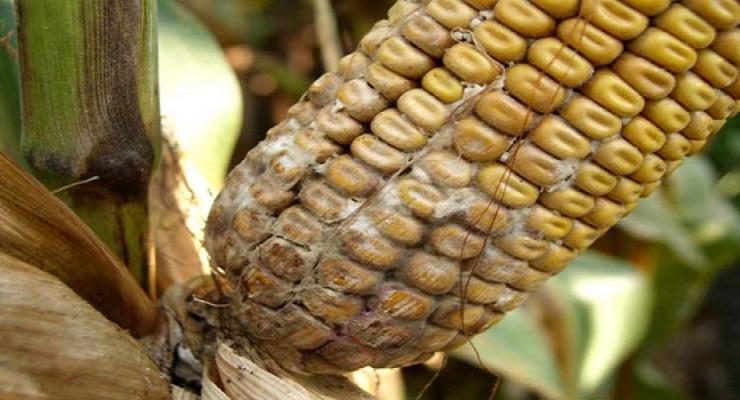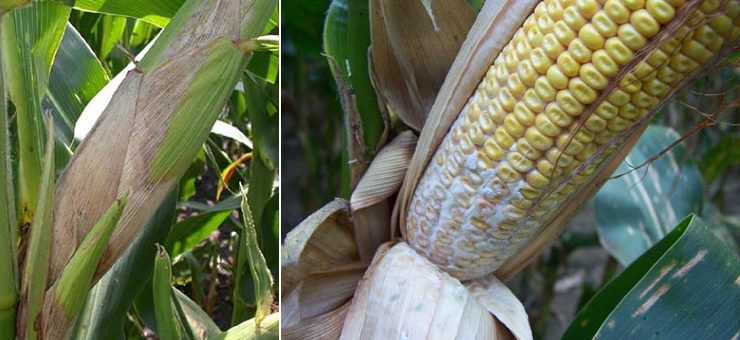Diplodia stalk and ear rot (Diplodia zeae) – identify and control

Diplodia stalk and ear rot, Diplodia zeae is very common and damaging in the USA, Africa, Australia, and some European countries.
Symptoms. The disease appears on the stems, where a greenish-yellow coloration of the lower internodes is observed, which, in a short time, turn brown and become spongy, and crumbly. The marrow of the stems is discolored, and decomposes and only the leading vessels remain evident. The leaves of diseased plants have a greyish-green color, and red-purple or dark brown spots appear on the leaf sheaths. The stems break easily.
Infected cobs have discolored whitish husks. In the case of early infections, the cobs remain small, have husks attached to each other, and acquire a brownish-gray color. Later, only a whitish, poorly developed mycelium is observed on the infected plants, which penetrates the cobs rachis.
Diplodia stalk and ear rot resist from one year to another in the form of resistance mycelium or by spores, in plant debris. The spores remain viable for 2-3 years. The spores formed on the first basal leaves are carried by the wind and will germinate in the water that stagnates after rains between husks and cobs. The disease occurs only if the plants are sensitized, due to excessive administration of nitrogen-based fertilizers. Plants attacked by the corn borer (Ostrinia nubilalis) or those with mechanical wounds are more frequently invaded by this fungus.
Prevention and control. The quarantine measures will be observed in order to avoid introducing this particularly dangerous pathogen into the country. To avoid the installation of soil pathogens, it is recommended to treat the seeds with specific fungicides.
















































































































































































































































































































































































































































